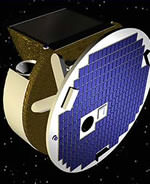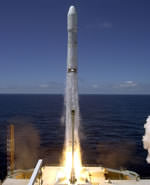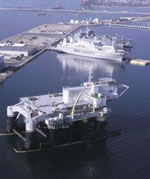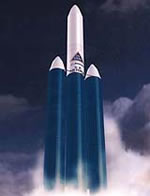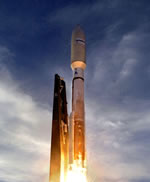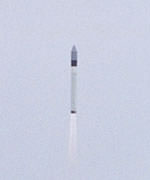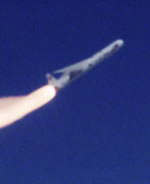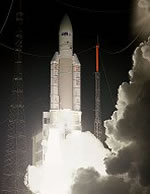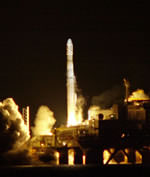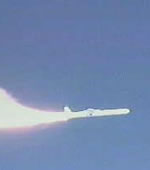
Image credit: NASA
The Canadian Space Agency’s SCISAT satellite was successfully launched Wednesday morning on board a Pegasus XL rocket. The L-1011 carrier aircraft deployed the three-stage Pegasus rocket at 0210 GMT (22:10 EDT Tuesday) at 12,000 metres, which then blasted up to a 650 km polar orbit. During its two-year mission, SCISAT will help a team of international scientists improve their understanding of ozone layer depletion – especially over Canada and the Arctic.
SAINT-HUBERT, Aug. 13 /CNW Telbec/ – The Canadian Space Agency (CSA)
today confirmed the successful launch of its SCISAT satellite last night from
NASA’s launch facilities near Lompoc, California. During its two-year mission,
SCISAT will help a team of Canadian and international scientists improve their
understanding of the depletion of the ozone layer, with a special emphasis on
the changes occurring over Canada and in the Arctic.
“This leading-edge Canadian technology will improve our scientific
understanding of the complex chemical changes occurring in the upper
atmosphere, particularly in the far north”, said Mr. Allan Rock, Minister of
Industry.” The SCISAT mission illustrates how Canadian universities,
government and industry can work together to put innovative technologies at
the service of scientific research,” added Minister Rock.
SCISAT was launched yesterday at 19:10 PDT, approximately 160 km offshore
from the Vandenberg Air Force Base. The 150 kg satellite was packed in the
nose of a Pegasus XL rocket dropped at 40,000 feet over the Pacific Ocean from
a Lockeed-1011 aircraft. The satellite was successfully brought to its 650 km-
high polar orbit by the 3-stage Pegasus rocket.
“SCISAT sets a milestone in Canadian space science,” said Marc Garneau,
President of the CSA. “Following the MOST space telescope launched in June,
SCISAT is the second science satellite successfully placed in orbit by Canada
in the last 45 days. This illustrates the growing importance of space science
for Canada and for the Canadian Space Program.”
A scientific team of researchers from around the world, lead by Professor
Peter Bernath of the University of Waterloo, will participate in the
Atmospheric Chemistry Experiment (ACE) which aims to measure and understand
the chemical processes that control the distribution of ozone in the Earth’s
atmosphere, particularly at high latitudes. The data, recorded as SCISAT
orbits the Earth, will provide scientists with improved measurements relating
to global ozone processes. It will also help policy makers assess existing
environmental policy and develop protective measures for improving the health
of our atmosphere and preventing further ozone depletion.
The primary scientific instrument on board SCISAT is a Fourier Transform
Spectrometer (ACE-FTS), built by ABB of Qu?bec City. A second instrument named
MAESTRO (Measurements of Aerosol Extinction in the Stratosphere and
Troposphere Retrieved by Occultation), built by EMS Technologies of Ottawa,
will also fly on the satellite. Dr. Tom McElroy of Environment Canada is the
principal investigator for MAESTRO, and will be supported by Professor James
Drummond of the University of Toronto.
For more background information on the SCISAT mission, please visit the
CSA website at: http://www.space.gc.ca/scisat1
Original Source: CSA News Release

